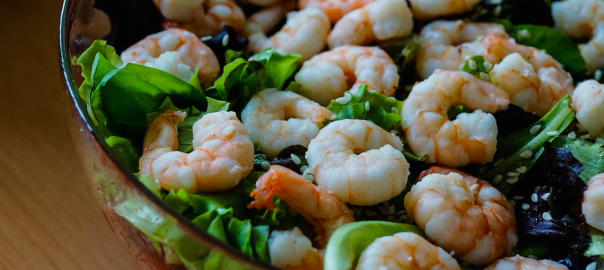It is common knowledge that fish are a healthy choice when compared with red meat. High in omega-3 fatty acids, potassium, and vitamin B12, fish is also a great protein source. Many people struggle, however, when it comes to cooking fish because they're not sure how do to it. Here are a few quick and easy tips on the different ways to cook fish
1.Baking
Baking is one of the easiest ways to prepare fish and it's fairly straightforward. The simple rule of thumb when it comes to baking fish is not more than 10 minutes for each inch of thickness. Being mindful of this measure means you're less likely to overcook the fish.
When choosing to bake fish it can be done either directly in a dish with seasoning or you can wrap it in parchment paper, season, and make a packet to place on a baking tray. The packet method is going to create a fish that is more steamed, but it's still cooked in the oven and is a healthy choice.
2. Broiling
This is a delicious and easy way to prepare fish. Do be mindful that the fish needs to be at least 4-5 inches below the broiler coil in order to make sure it does not burn. Fish will need to be basted when broiling to make sure it doesn't dry out. Broil approximately 4 minutes on each side. Check with a meat thermometer to make sure it's cooked through before serving.
3. Poaching
Poaching is a great way to cook fish while keeping it moist. Begin by placing the fish into a dish and just barely covering it with liquid and your seasonings of choice. Bring the fish to a simmer on the stovetop and check it with a meat thermometer. When it has reached an internal temperature of 165-180°F it's ready.
Poaching is a wonderful way to add flavor. Start by heating the liquid and the aromatics. If there's olive oil use it to saute any onions or garlic first to bring out their flavor. Bring the ingredients to a high simmer, add the fish and then poach 10-12 minutes until the fish is cooked though. If needed increase the liquid and aromatics to make sure the fish is covered.
Some tasty poaching liquid combinations include:
- 2 cups olive oil + 1 diced shallot + 3 cloves of garlic, minced + 1 bay leaf + 1 heaping teaspoon citrus zest
- 1/3 cup white wine + 2/3 cup butter + 1 clove garlic, minced + 2 small sprigs of fresh thyme
- 1 tablespoon olive oil + 1 shallot + 3 cloves garlic, minced + 1 teaspoon grated ginger + 1 14.5 ounce can of full fat coconut milk + zest of 1 lime + 2 tablespoons lime juice + ½ teaspoon red pepper flakes
- 2 cups bone broth [link] + 2 leeks, cleaned and sliced + zest of 1 lemon + 2 tablespoons lemon juice + 1 teaspoon grated ginger
4. Pan frying
Frying fish is another quick and delicious way to prepare many kinds of fish. Typically with this method butter or oil is added to the pan. Once it's heated the seasoned fish is then placed in the pan and cooked until done. While you can purchasing seasoning mixes for fish, it's simple to make your own by combining
- 1 tablespoon dry basil
- 1 tablespoon dill weed
- 1 tablespoon onion powder
- 1 heaping teaspoon parsley
- ½ teaspoon celery seed
- sea salt and fresh ground pepper to taste
- Mix all ingredients together and sprinkle liberally over the fish
- For more flavor keep the sauce from the pan and drizzle it over the fish once it's on the plate
- Then add a generous squeeze of lemon juice for a wonderful way to finish the dish
General guidelines for eating fish call for 2-3 servings per week. However you prepare your fish keep in mind that it is a fabulous protein. For better nutrient density when it comes to fish be sure to purchase wild caught, not farm raised. It's also a good idea to be mindful of the sustainability of your fish (how responsibly it's been sourced and the environmental impact). The best resource to check this is the Monterrey Bay Aquarium's Seafood Watch. You can check online or download the app.
Long time readers will be aware that I have a true food allergy for fish and seafood. This would be why there are so few fish recipes on the website. This post was generously contributed by my friend Rachel, a wonderful cook and real-food advocate.
[expand title="Sources"]
"Advice About Eating Fish". U.S. Food And Drug Administration, 2022, https://www.fda.gov/food/consumers/advice-about-eating-fish.
Caters, Eco. "Wild Caught Vs. Farm-Raised Fish: Which Is Better? | Eco Caters". Best Catering In San Diego, Los Angeles, & DC | Eco Caters, 2019, https://www.ecocaters.com/blog/wild-caught-vs-farm-raised-fish-which-is-better/.
Wadyka, Sally. Consumer Reports. How Often Should You Be Eating Fish.
https://www.consumerreports.org/healthy-eating/how-often-should-you-be-eating-fish/. May 17, 2018
[/expand]








